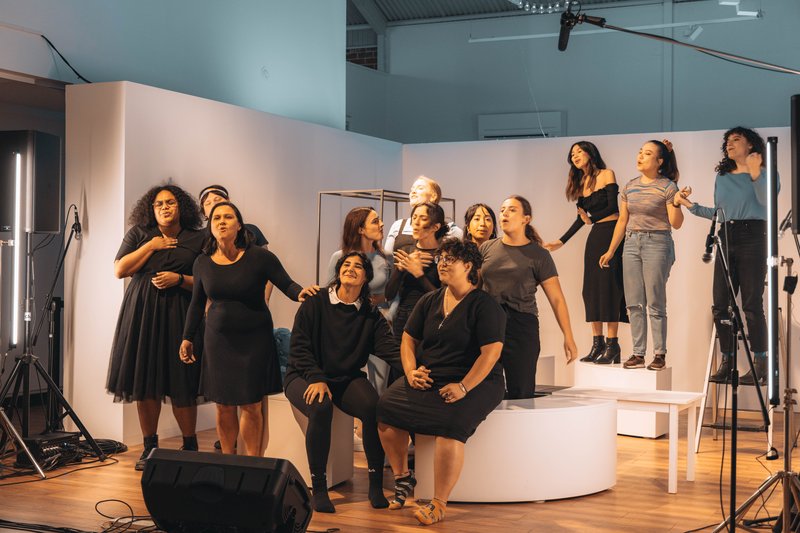Equity in Arts Opportunities
To address inequities within the sector – such as gender, race and access – it is necessary to implement practical steps to support equitable application and selection processes.
To address inequities within the sector – such as gender, race and access – it is necessary to implement practical steps to support equitable application and selection processes.

While the Australian contemporary arts sector is a vastly diverse community, this is not currently reflected in the opportunities that are awarded. 2021 research showed that culturally and linguistically diverse (CALD) applicants accounted for 12% of successful applications from Australia Council grants, with 5% of successful applicants living with disability and 7% identifying as First Nations. Just 22% of the peer assessing panels had CALD representation and 6% were people living with disability.
To address inequities within the sector – such as gender, race and access – it is necessary to implement practical steps to support equitable application and selection processes. This means ensuring the processes are safe and accessible for those applying to grants, prizes, residences, commissions, employment and other opportunities.
The current conditions and how to navigate them are explored in the new Equitable Application Processes section in NAVA’s Code of Practice, written by freelance writer and editor Monique Choy. This section features an overview of the responsibilities of organisations and applicants and provides practical recommendations for equitable processes, as well as measuring and evaluating results for long-term success.
The Code states that power dynamics must be taken into account throughout the selection process. One first step that many organisations can take is to increase the diversity of the decision-making panel. However, it’s also important to provide support to the panel through training and clear guidelines, as it is not always easy or automatic to make equitable decisions. It is good practice to include a First Nations representative on any selection panel, and decision-makers who have lived experience should always be involved in decisions for related opportunities. For example, the Code suggests that First Nations judges should award First Nations art opportunities, and d/Deaf or Disabled panelists should award grants for d/Deaf or Disabled artists.
As well as the selection panel, having a diversity of applicants is also a significant consideration. Often, arts organisations may find they have not received many applications from artists from marginalised groups, though this does not mean that there are not many diverse artists in the industry. Underlying causes for low application numbers may reveal the organisation has not connected to diverse networks to advertise the opportunity, and this can be a result of barriers to inclusion.
Organisations can reach diverse audiences routinely through social media and have an inclusion statement and person to contact in advertised call-outs. It may also be useful to consider accessing networks of diverse artists and seeking their help with promoting opportunities or connecting to specialist networks, such as First Nations networks, pride networks, Diversity Arts Australia, Accessible Arts Australia and Regional Arts Australia, as well as state-based and local organisations.
Allowing flexible application formations, such as a short video statement or interview rather than a written application, may allow for a more equitable application process for a wider range of people. Application information and forms should use clear and accessible language, and it is good practice to also provide information and program guidelines in a variety of formats, such as plain English, audio and video formats. Organisations may also translate materials or hold in-person information sessions.
It is important to collect and analyse demographic data about applicants in order to evaluate the ongoing equity of your application and selection processes. Demographic questions can be added to the end of application forms, and they should always be optional, with clear information on why and how you are collecting demographic data. Tracking the demographics of applicants as they progress through the selection process is another way to account for equitability in all stages of an opportunity. For example, comparing the diversity of all applicants to the diversity of the shortlist and the selected recipients. This will allow organisations to pinpoint barriers and biases in the decision-making process.
Though it is important to begin making equitable decisions for selection panels and encouraging applicants from underrepresented groups to apply for opportunities – a commitment to equity must be reflected throughout the application and selection processes. This includes (and is not limited to) allowing flexible application formats, training decision-makers, evaluating and monitoring demographics, and being open to feedback and consultations. Equitable application processes are just one way that organisations can make practical and effective changes to address inequities in the arts sector.
Image: Fairfield City Museum & Gallery, Spinoff: a safe place for dangerous ideas, 2022. Photo by Alejandro Trejo - NAFoto.
ID: A group of people are singing together in a recording room, with a studio light and microphone above them. The singers are wearing a mix of dark colours, and some are standing or sitting on white stands.